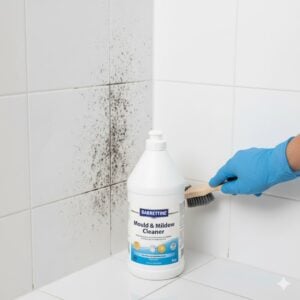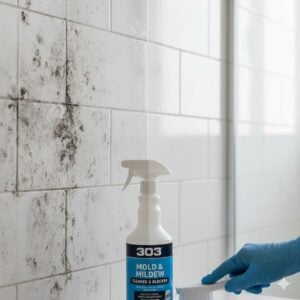Hello and welcome to our latest exploration on the demanding and crucial role of crime scene cleaners. Stepping into the aftermath of unexpected events requires not only a strong stomach but a compassionate heart and a keen mind. Today, we delve into the world of crime scene cleanup, offering eight insider tips that are indispensable for those in the field. This profession isn’t just about cleaning; it’s about restoring peace and safety to spaces that have witnessed turmoil. Understanding the significance of this work highlights why it’s essential to approach each task with both professionalism and empathy.
Table of Contents
Toggle#1 Safety First
Crime scene cleaning is a crucial yet often misunderstood aspect of post-incident recovery, pivotal in restoring order and safety to environments marked by tragedy. At its core, this profession transcends the mere removal of visible contaminants; it’s an intricate process aimed at eradicating biological hazards and ensuring the area is safe for return. A crime scene cleaner’s role begins where the investigative and legal procedures end, stepping in to confront the physical reminders of the incident. This task is not for the faint-hearted, demanding a blend of technical skill, mental fortitude, and an empathetic understanding of the situation’s gravity.
The initial phase of crime scene cleanup involves a comprehensive assessment of the scene. This step is vital for developing a tailored approach to each unique situation, taking into account the type and extent of biohazardous material present. Given the potential risks associated with biohazards—such as bloodborne pathogens—establishing a plan that prioritizes safety and efficiency is paramount.
Following the assessment, the implementation of rigorous cleaning protocols is crucial. These protocols are designed to remove all traces of biological material, employing specialized cleaning agents and equipment to ensure the thorough decontamination of the area. It’s not just about physical cleaning; it’s about applying scientific principles to neutralize potentially harmful biological substances effectively.
Moreover, a key component of crime scene cleaning is the disposal of hazardous materials. This process must adhere to strict regulations governing the handling and disposal of biohazardous waste, ensuring it’s carried out in a manner that protects public health and the environment. This meticulous approach underscores the technical expertise required in crime scene cleanup, highlighting the necessity for trained professionals who can navigate these complexities with precision.
This detailed overview of crime scene cleaning encapsulates the multifaceted nature of the job, illustrating not only the technical demands but also the profound responsibility borne by those in the field.
#2 Emotional Preparedness
Safety is the cornerstone of crime scene cleanup, a principle that cannot be overstated in its importance. The very nature of the job involves exposure to hazardous materials, including biological contaminants that pose significant health risks. Personal Protective Equipment (PPE) is not just an accessory but a critical shield that protects cleaners from these dangers. The appropriate use of PPE—such as gloves, gowns, masks, and eye protection—is mandatory, designed to create a barrier against pathogens that might be present in blood, bodily fluids, and other biohazardous materials found at the scene.
Understanding and adhering to health and safety guidelines is another non-negotiable aspect of the job. This knowledge encompasses not only the correct use and disposal of PPE but also the safe handling and transportation of biohazardous waste. Regulatory bodies have set forth specific protocols for these procedures to mitigate the risk of contamination and spread of infectious diseases. Cleaners must be familiar with these guidelines and execute their tasks in compliance with both local and federal regulations.
The complexity of managing a safe cleanup operation extends beyond personal safety to include the safeguarding of the environment. Techniques for decontaminating surfaces must ensure that pathogens are neutralized without causing harm to the surrounding area. This balance requires a comprehensive understanding of the chemicals and methods that are both effective against biohazards and environmentally responsible.
Training plays a pivotal role in safety, providing crime scene cleaners with the knowledge and skills necessary to navigate the challenges of the job safely. Ongoing education is crucial, as it keeps professionals updated on the latest safety protocols, cleaning techniques, and regulatory requirements. This commitment to continuous learning ensures that cleaners are prepared to handle the complexities of the job, minimizing risks to themselves, the public, and the environment.
This emphasis on safety underscores the highly specialized nature of crime scene cleanup, where meticulous attention to detail and stringent adherence to protocols are essential in protecting human health and the environment.
#3 Thorough Cleaning Practices
Emotional preparedness is an essential facet of crime scene cleanup, challenging workers to maintain their psychological well-being in the face of distressing circumstances. The nature of the job often requires dealing with scenes of violence, tragedy, and loss, which can take a significant emotional toll on even the most seasoned professionals. Acknowledging and addressing the mental health impact of this work is crucial for sustaining long-term effectiveness and personal well-being.
Firstly, developing strategies for emotional resilience is key. This might involve routine debriefings with team members after completing a job, where experiences and feelings are shared in a supportive environment. Such practices help normalize the emotional responses individuals may have and provide a platform for mutual support and understanding. Additionally, accessing professional counseling services can offer a confidential space to process more profound or troubling reactions, ensuring that emotional baggage does not become overwhelming.
Stress management techniques also play a vital role in emotional preparedness. Regular physical activity, mindfulness exercises, and engaging in hobbies or activities outside of work can serve as valuable outlets for relieving stress. These practices help maintain a healthy work-life balance, preventing burnout and promoting overall mental health.
It’s also important for employers to foster a workplace culture that prioritizes mental health. This could involve offering training on coping mechanisms, providing access to mental health resources, and encouraging a culture where seeking help is viewed as a strength rather than a weakness. Such initiatives demonstrate a commitment to the well-being of staff, enhancing morale and job satisfaction.
Finally, developing a personal support network outside of work can offer additional emotional stability. Family, friends, and community connections provide a sense of belonging and a safe haven from the stresses of the job, reinforcing the importance of social support in maintaining mental health.
Addressing the emotional challenges of crime scene cleanup head-on with proactive strategies ensures that workers are not only physically equipped to perform their duties but are also psychologically supported through the unique demands of their profession.
#4 Handling Hazardous Materials
Thorough cleaning practices form the backbone of effective crime scene cleanup, ensuring that spaces are not only visually clean but also free from biological and chemical hazards. This meticulous process involves several critical steps, each designed to address different aspects of the cleanup and ensure the area is restored to a safe and habitable state.
The initial step in the cleaning process is the removal of all visible contaminants. This includes biological materials such as blood and bodily fluids, which are carefully collected and disposed of according to biohazard waste regulations. Specialized equipment, including biohazard bags, sharps containers, and protective gear, ensures that this process is conducted safely and efficiently.
Following the removal of visible contaminants, attention turns to the disinfection of the area. This step is crucial for eliminating pathogens and preventing the spread of infection. Crime scene cleaners use EPA-registered disinfectants designed to kill bacteria, viruses, and other microorganisms. The application of these disinfectants is thorough, covering all surfaces that might have come into contact with biohazardous materials. In some cases, advanced techniques such as fogging may be employed to ensure even hard-to-reach areas are sanitized.
Odor elimination is another important aspect of thorough cleaning practices. Odors can be deeply embedded in materials and structures, requiring specialized treatments to remove. Techniques such as ozone treatment and the use of industrial-grade air scrubbers can effectively neutralize odors, restoring the air quality of the affected area.
The final step in the cleaning process involves verifying the cleanliness and safety of the area. This may include the use of ATP (adenosine triphosphate) testing to detect the presence of organic matter that could indicate a need for further cleaning. Only once the area has been thoroughly cleaned and tested to confirm the absence of hazardous materials is the cleanup considered complete.
Implementing thorough cleaning practices is essential for ensuring that crime scene cleanup is conducted to the highest standards, safeguarding the health and well-being of both the cleaners and the occupants of the restored space.
#5 Odor Elimination Strategies
Handling hazardous materials is a critical aspect of crime scene cleanup, demanding strict adherence to protocols to ensure safety and compliance with health regulations. The process begins with the proper identification of hazardous substances present at the scene, which can range from biological materials like blood and bodily fluids to chemical residues from illicit drugs or industrial accidents. Each type of hazard requires a specific approach for safe handling and disposal, underscoring the need for specialized training and expertise in these operations.
The first step in handling hazardous materials is the correct identification and assessment of the risks they pose. This is essential for determining the appropriate protective measures and cleaning methods to be employed. Personal Protective Equipment (PPE) plays a pivotal role in this process, providing a barrier against harmful substances. Selecting the right type of PPE, such as gloves, respirators, and protective suits, is based on the nature of the materials encountered.
Once the hazards have been assessed, the next step involves the safe collection and removal of these materials. This is done using tools and containers specifically designed for biohazardous waste, ensuring that the risk of exposure or contamination is minimized. Techniques for handling sharp objects and other dangerous items are also crucial to prevent injuries during cleanup.
Disposal of hazardous materials is governed by strict regulations that dictate how and where these substances can be safely disposed of. Compliance with these regulations is not optional; it’s a legal requirement that helps protect public health and the environment. Specialized waste disposal services that are licensed to handle biohazardous and chemical waste play a critical role in this process, ensuring that hazardous materials are treated or disposed of in a manner that mitigates their risk.
Finally, the cleanup process includes decontamination of the equipment and vehicles used in the cleanup operation. This step is vital to prevent the accidental spread of hazardous materials to other locations or individuals. Proper decontamination procedures ensure that all equipment is safe for reuse and that the cleanup team can safely exit the contaminated area without posing a risk to themselves or others.
The meticulous approach to handling hazardous materials highlights the complexity and importance of crime scene cleanup work. It ensures that these potentially dangerous substances are managed safely and responsibly, protecting both the cleanup personnel and the broader community.
#6 Restoring the Scene
Odor elimination is a critical challenge in crime scene cleanup, requiring a sophisticated approach to effectively address. Odors associated with crime scenes are not just unpleasant; they can also pose significant health risks and are often indicative of biological contamination that must be thoroughly eradicated. The process of odor elimination involves several key steps, each designed to identify, neutralize, and prevent the recurrence of odors.
Identifying the source of the odor is the first step in the elimination process. This often requires a detailed inspection of the scene, as odors can emanate from various sources, including bodily fluids, decomposition, and chemical substances. In some cases, advanced detection equipment may be used to pinpoint the exact location and nature of the odor-causing materials.
Once the source is identified, the next step is the application of specialized cleaning agents designed to neutralize odors at a molecular level. These products are specifically formulated to break down and eliminate the compounds responsible for odors, rather than merely masking them. The choice of cleaning agent depends on the type of material causing the odor and the surface being treated, ensuring that the method is both effective and safe for the environment.
In addition to chemical treatments, physical removal methods such as air scrubbing and ventilation are employed to clear the air of odor-causing particles. Industrial-grade air scrubbers equipped with HEPA filters can capture airborne contaminants, while ventilation helps to circulate fresh air into the area, further aiding in the elimination of odors.
Preventative measures are also an important aspect of odor control, aiming to minimize the risk of odor recurrence. This might include sealing porous surfaces that can trap odors or applying protective coatings that prevent the absorption of odors in the future.
Effective odor elimination is essential for restoring a sense of normalcy to affected spaces, ensuring they are not only clean but also free from any lingering reminders of the incident. This process underscores the meticulous attention to detail and specialized knowledge required in crime scene cleanup to achieve a thorough and lasting resolution.
#7 Communication Skills
Restoring the scene to its pre-incident condition is a pivotal final step in the crime scene cleanup process, embodying the transition from chaos back to normalcy. This restoration is not just about cleaning; it’s about meticulously reconstructing the affected environment to erase the marks of the incident, thereby alleviating the psychological burden on the victims and their families. The process involves several critical stages, each tailored to the specific needs of the scene, ranging from structural repairs to the careful selection of cleaning methods that preserve the integrity and aesthetics of the property.
The first phase in restoration focuses on structural integrity. Any damage to the property, such as broken windows, damaged walls, or compromised flooring, needs to be assessed and repaired. This may involve minor repairs or significant reconstruction efforts, depending on the severity of the damage. The goal is to ensure the physical safety of the space for its occupants, addressing any hazards that could pose risks in the future.
Following structural repairs, the next step involves deep cleaning and sanitization of the area. This stage extends beyond the removal of visible stains and biohazards; it encompasses the treatment of the space with specialized cleaning agents that eliminate any residual odors and contaminants. The thoroughness of this cleaning ensures that the environment is not only visually restored but also hygienically safe.
The final stage of restoration often involves cosmetic refinements to return the space to its original state or, in some cases, an improved one. This could include repainting, replacing furnishings, or other aesthetic touches that help to erase the physical reminders of the incident. Such efforts are crucial for providing a sense of closure and comfort to those affected, helping them to move forward.
This comprehensive approach to restoration plays a crucial role in the healing process for individuals and communities affected by traumatic events. By meticulously addressing each aspect of the damage and ensuring a thorough return to normalcy, crime scene cleanup professionals provide not just a service, but a pathway to recovery and peace of mind.
#8 Continuous Education and Training
Effective communication skills are paramount in crime scene cleanup, serving as a linchpin that ensures the operation runs smoothly and sensitively. This necessity arises from the need to liaise with a diverse array of stakeholders including law enforcement, clients, and sometimes even the media. The nature of the work demands not just clarity and accuracy in conveying information but also a profound sense of empathy and discretion.
The initial communication with law enforcement is crucial for understanding the specifics of the scene, including potential hazards and the presence of evidence that must be preserved. This exchange requires a clear, concise manner of speaking and an understanding of legal and procedural terminology. Ensuring accurate information exchange is vital for performing the cleanup efficiently while respecting legal and investigative processes.
When dealing with clients, who are often victims’ families or property owners, the need for empathetic communication comes to the fore. Explaining the cleanup process and setting realistic expectations, all while being mindful of the emotional state of the clients, demands a high degree of sensitivity and patience. This is where listening becomes as important as speaking, allowing the cleanup team to understand the clients’ needs and concerns fully.
Moreover, handling sensitive information with confidentiality underscores the ethical responsibilities of crime scene cleaners. This includes respecting the privacy of all involved and safeguarding any personal information encountered during the cleanup process. The ability to communicate discreetly about the details of the work, especially in potentially high-profile cases, is essential for maintaining trust and professionalism.
Developing and honing communication skills within the context of crime scene cleanup is not merely about facilitating the logistical aspects of the job. It’s about building trust, offering comfort during difficult times, and ensuring the dignity of those affected is preserved. This dual focus on efficiency and empathy defines the role of communication in bridging the gap between technical cleanup operations and the human element of the aftermath of tragedy.
Why Bio On is Your Go-To for Crime Scene Cleaner
Bio On stands out as the optimal solution for crime scene cleanup due to its comprehensive expertise and commitment to safety, empathy, and professionalism. With a team of highly trained professionals, Bio On ensures that every aspect of crime scene cleanup is managed with utmost care and precision, from hazardous material handling to the emotional well-being of those affected.
Utilizing state-of-the-art equipment and advanced cleaning techniques, Bio On guarantees not only the thorough decontamination and restoration of the scene but also respects the privacy and needs of its clients throughout the process. The dedication to continuous training and adherence to strict safety protocols makes Bio On a reliable partner in restoring safety and peace of mind in the aftermath of traumatic events.
Conclusion
In conclusion, navigating the complexities of crime scene cleanup requires a blend of technical expertise, emotional resilience, and meticulous attention to detail. It is a field where the professionalism of the cleanup team directly impacts the well-being of those affected by traumatic events. Bio On embodies these essential qualities, offering comprehensive services that prioritize safety, respect, and thoroughness. For individuals facing the daunting task of crime scene cleanup, reaching out to Bio On’s team for a free consultation can provide the necessary support and assurance needed during such challenging times. Interested parties are encouraged to contact Bio On through the WhatsApp button for immediate assistance and expert guidance.













